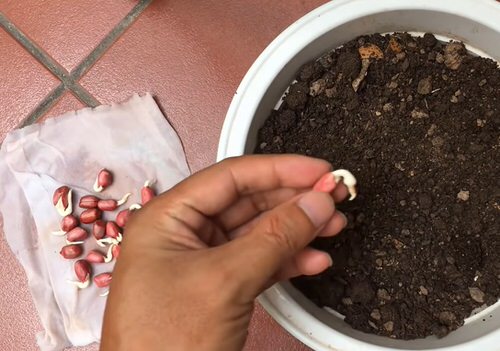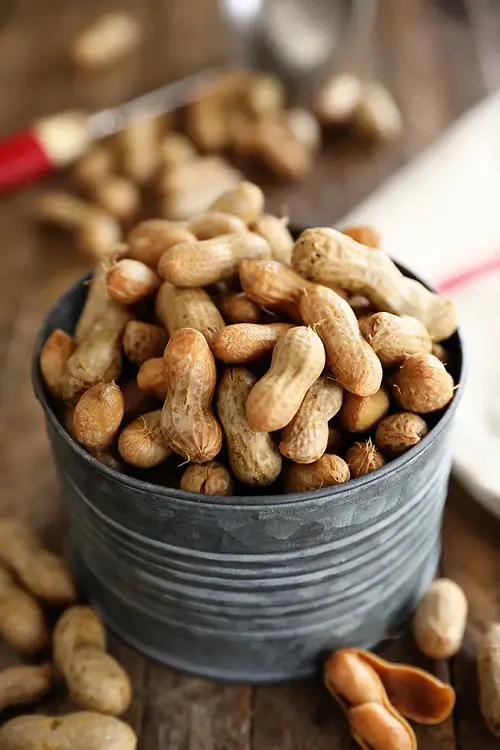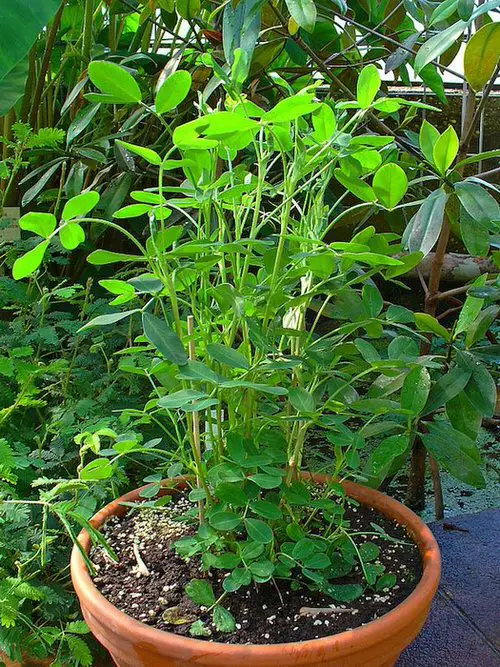Unveil the captivating origins of everyone’s favorite snack as we explore the fascinating journey of “Where do Peanuts Come From“!
Have you ever wondered, with a mouthful of peanut butter or a handful of roasted peanuts, where these irresistible treats actually come from? Prepare to be amazed as we dive into the captivating world of peanuts and trace their remarkable path. So, fasten your seatbelts and get ready for a nutty adventure as we uncover “Where do Peanuts Come From“!
Check out our article on where does black pepper come from here
What is a Peanut?
Peanuts, those delightful little legumes, are the edible seeds of the peanut plant. These versatile nuts find their way into a wide array of cuisines, including Japanese, Italian, Chinese, Mexican, Afghani, and Russian dishes, adding their unique flavor to every bite.
The reason behind their sometimes hefty price tag lies in the patience required for their growth. On average, a peanut plant takes approximately 130-150 days to reach maturity and start producing peanuts.
Fun Peanut Fact: There are many species of peanut plants, with Runner, Virginia, Spanish, and Valencia being the most common ones in the US.
Other Names: Groundnuts, Goober peas, Monkey nuts, Earth nuts, Arachis nuts.
Find out the best nuts for growing in containers here
Where do Peanuts Come From?
Peanuts have a fascinating origin story. These seeds, which develop underground within the peanut plant (Arachis hypogaea), are native to South America. The Inca civilization in Peru and the Aztecs in Mexico were among the early cultivators of peanuts.
Later, peanuts spread across the globe, thanks to Portuguese traders who brought them from Brazil to Africa. From there, they reached Asia, Europe, and North America.
Today, peanuts are grown in many countries. China and India are major producers, with the United States also boasting a thriving peanut industry in states like Georgia, Texas, and Alabama.
Other notable peanut-producing countries include Nigeria, Sudan, Indonesia, Argentina, and Brazil. These regions provide the ideal climate for peanut plants to thrive, resulting in the delicious and nutritious peanuts we love.
Check out our article on Where Do Pine Nuts Come From here
What do Peanuts Taste like?
Peanuts are a versatile and widely enjoyed legume. When it comes to describing the taste of peanuts, they are commonly associated with a distinct and unique flavor profile.
Peanuts have a rich and nutty taste that is often described as earthy, slightly sweet, and savory. Their flavor is robust and can range from mild to intense, depending on the variety and roasting method. Raw peanuts tend to have a more subtle taste, while roasted peanuts develop a deeper, toasty flavor that enhances their natural sweetness.
The crunchy texture of peanuts adds to the overall sensory experience. The exterior shell is firm and slightly rough, providing a satisfying crunch when cracked open. Inside, the kernels are creamy and smooth, offering a delightful contrast to the outer shell.
Where Do Cashews Come From? Find out here
Peanut Nutrition Facts
The month of March accounts for National Peanut Lovers Day (15 March) and National Peanut Month. This legume is versatile as it is the primary source of the most famous invention of Peanut Butter. It provides a daily dose of required nutrition in the body.
- Research shows that their consumption may help in weight loss and also reduce the risk of heart disease.
- Widely used in cooking for the preparation of cakes, sauces, confectionery, desserts, chutney, and many more.
- Packed with nutrients such as copper, vitamin E, magnesium, and thiamine.
- Recommended for diabetics because of their low carb content.
- The skin of peanuts is also full of antioxidants, good fats, and protein.; beneficial when eaten raw.
- Groundnuts also help in reducing cholesterol.
How to Grow Peanuts?

1. Choose the Right Peanut Variety
When it comes to growing peanuts, selecting the right variety is key. Opt for a peanut variety that is well-suited to your climate and growing conditions. Consult with local nurseries or agricultural extension offices to find out which varieties thrive in your area. The easiest ones to grow are the Virginia Jumbo, Spanish Peanuts, and Valencia Peanuts.
2. Prepare the Soil
Peanuts thrive in loose, well-drained soil. Start by clearing the planting area of any weeds or debris. Loosen the soil using a garden fork or tiller to a depth of about 8 to 10 inches.
Learn some Great Tips to Rejuvenate Your Old Soil here
Ensure the soil is rich in organic matter by incorporating compost or well-rotted manure. This will provide the peanuts with the nutrients they need for healthy growth.
3. Planting Peanut Seeds
Peanut seeds, or “seeds” as they are commonly called, are not true seeds but rather underground pods. Plant the seeds about 2 inches deep in the soil, with a spacing of approximately 8 to 12 inches between each seed.
Place them with the pointed end facing downwards, as this is where the roots will emerge. Aim for a sunny location that receives at least six hours of direct sunlight daily.
4. Watering and Maintenance
Peanuts require consistent moisture during their growing season. Water the plants regularly, aiming to keep the soil consistently moist but not waterlogged. Mulching around the plants can help retain moisture and control weeds.
Here are the best ways to water plants
You should keep an eye out for disease or pest infestations and take appropriate measures to address these promptly.
5. Be Patient
Wait until the plants start to yellow and show signs of maturity, which typically occurs around 120 to 150 days after planting, depending on the variety. This is when your peanuts are ready to harvest.
How to Harvest Peanuts?

Wondering how long does it take to grow peanuts and how to harvest them? Peanuts grow and mature in 120-150 days, depending on the variety. Once you notice the yellowing of leaves on the peanut plant, they are ready to harvest.
- Loosen the soil around peanut plants.
- Lift entire plants carefully, grasping stems near the base. Make sure you have your gardening gloves on.
- Gently shake off excess soil from the peanuts and hang harvested plants upside down in a well-ventilated area to dry.
- Allow plants to air dry for a few weeks to cure the peanuts. Twist or pull peanuts off the plants, being gentle to avoid damage.
- Remove any remaining foliage or stems attached to the peanuts. And Voila!
- You can now store your peanuts wherever you want. If you are thinking of storing them long-term, you should leave their shells on.
Here are the Best Vegetables that are Ready to Harvest in Less than 2 Months
How to Store Peanuts?
To keep your peanuts fresh and tasty, you need to store them properly. First, make sure your peanuts are dry by allowing freshly harvested ones to air dry for a few weeks. Then, choose clean, airtight containers like mason jars or resealable bags. Keep the peanuts in a cool, dry place away from direct sunlight, preferably between 50°F (10°C) and 70°F (21°C).
Remember to seal the containers tightly to prevent air exposure and unwanted odors. If you want to store them for longer periods, you can refrigerate them for up to six months or freeze them for up to a year. Just be aware that refrigeration or freezing might alter the texture slightly. Lastly, occasionally check for any rancid smell or taste, and discard any peanuts that have gone bad.
Learn Growing Peanuts in Containers here
Frequently Asked Questions
1. Do Peanuts Grow on Trees?
No, peanuts do not grow on trees. They are not tree nuts but rather legumes that grow underground. The plant is a low-growing annual plant that belongs to the Fabaceae family. Peanuts develop from the flowers that appear above ground, and as they mature, the flowers elongate and bend downward, burying the developing pods in the soil where the they eventually form.
2. How does Peanuts Grow?
Peanuts grow underground as part of a unique process. The plant begins as a small, yellow flower above ground. After pollination, the flower stalk elongates and bends toward the soil. The developing pods, called pegs, burrow into the ground.
As they continue to grow, the pods mature and form the peanuts. This distinctive underground growth is what makes peanuts different from other plants, and it contributes to their characteristic appearance and cultivation process.






